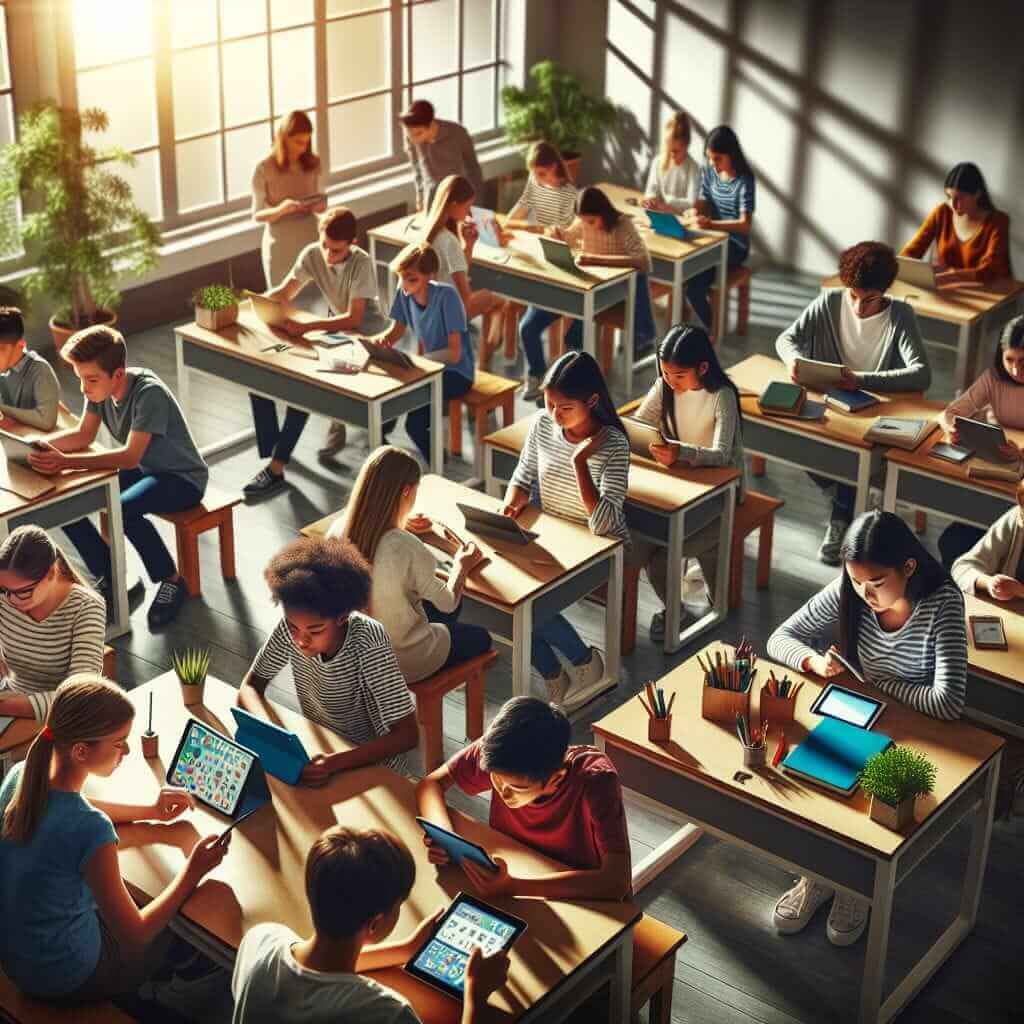Mobile technology has significantly reshaped various aspects of our lives, including how we learn. This topic has increasingly appeared in IELTS Writing Task 2 exams, reflecting its growing importance in modern education. Given the continuous advancements in mobile technology, it is anticipated that this theme will be recurrent in future IELTS exams.
Here, we will explore a relevant IELTS Writing Task 2 essay question on mobile technology’s influence on learning, analyze it in detail, provide a model answer, and offer guidance on vocabulary and grammar.
Sample IELTS Writing Task 2 Prompt
Many believe that mobile technology has significantly changed the way we learn. Discuss both the positive and negative aspects of this influence. Give your opinion.
Analyzing the Essay Prompt
This task prompt requires discussing both sides of the argument regarding the influence of mobile technology on learning. The essay should cover:
- Advantages of mobile technology in education.
- Disadvantages or potential downsides of mobile technology in educational contexts.
- The candidate’s own opinion on the matter.
An effective essay will present balanced arguments with relevant examples, followed by a clear opinion based on the discussed points.
Model Essay
The growing prevalence of mobile technology has undeniably transformed how we learn. While this transformation has brought numerous benefits, it is imperative to consider the drawbacks as well. In this essay, I will discuss both the advantages and disadvantages of mobile technology in learning and present my perspective on the issue.
On the positive side, mobile technology has made education more accessible and flexible. Students can now access a wealth of information and educational resources through their smartphones and tablets, allowing for continuous learning regardless of time and place. For instance, various educational apps and online courses enable individuals to acquire new skills or enhance their knowledge at their convenience. Additionally, mobile technology facilitates interactive learning through multimedia presentations, educational games, and virtual reality experiences, making the learning process more engaging and effective.
However, there are also several negative aspects to consider. The most significant concern is the potential for distraction. Mobile devices offer various forms of entertainment, such as social media, games, and videos, which can divert students’ attention from their studies. This distraction can lead to decreased academic performance and even addiction to digital content. Moreover, the overreliance on mobile technology may diminish critical thinking and problem-solving skills, as students might become accustomed to finding quick answers online rather than engaging in deep thinking and research.
In my opinion, while mobile technology undoubtedly offers valuable educational opportunities, it is essential to strike a balance. Educators and students should leverage mobile technology as a supplementary tool rather than a primary source of learning. By incorporating traditional teaching methods alongside mobile technology, the negative impacts can be mitigated, ensuring a well-rounded educational experience.
In conclusion, mobile technology has revolutionized the way we learn, providing unparalleled access to information and interactive learning experiences. Nevertheless, the potential for distraction and the erosion of critical thinking skills cannot be overlooked. It is crucial for both educators and learners to use these technologies wisely to maximize their benefits while minimizing their drawbacks. (364 words)
Writing Tips
-
Vocabulary and Grammar:
- Mobile technology: Use synonyms and related terms such as “smartphones,” “smart devices,” “digital tools.”
- Accessibility: Terms like “available,” “reachable,” “obtainable.”
- Distraction: Words like “diversion,” “interruption,” “hindrance.”
- Interactive learning: Expressions such as “participatory education,” “engaging lessons.”
-
Grammar Structures:
- Comparative structures: “More accessible,” “less effective than.”
- Subjunctive mood: “It is essential that students leverage…”
Key Vocabulary to Remember
- Prevalence (noun) /ˈprɛvələns/: The fact or condition of being widespread.
- Engaging (adjective) /ɪnˈɡeɪdʒɪŋ/: Attracting or holding interest.
- Facilitate (verb) /fəˈsɪlɪteɪt/: Make (an action or process) easy or easier.
- Addiction (noun) /əˈdɪkʃən/: The fact or condition of being addicted to a particular substance, thing, or activity.
- Erosion (noun) /ɪˈroʊʒən/: The gradual destruction or diminution of something.

Conclusion
Mobile technology has significantly influenced learning, offering benefits like accessibility and interactive experiences while presenting challenges such as distraction and potential addiction. To overcome these drawbacks, it is essential to use mobile technology judiciously alongside traditional educational methods. Future IELTS candidates should be prepared to discuss various aspects of this topic, considering both positive and negative impacts thoroughly.
Other related topics you may encounter include:
By preparing for these themes, you can enhance your readiness for the IELTS Writing Task 2 exam.